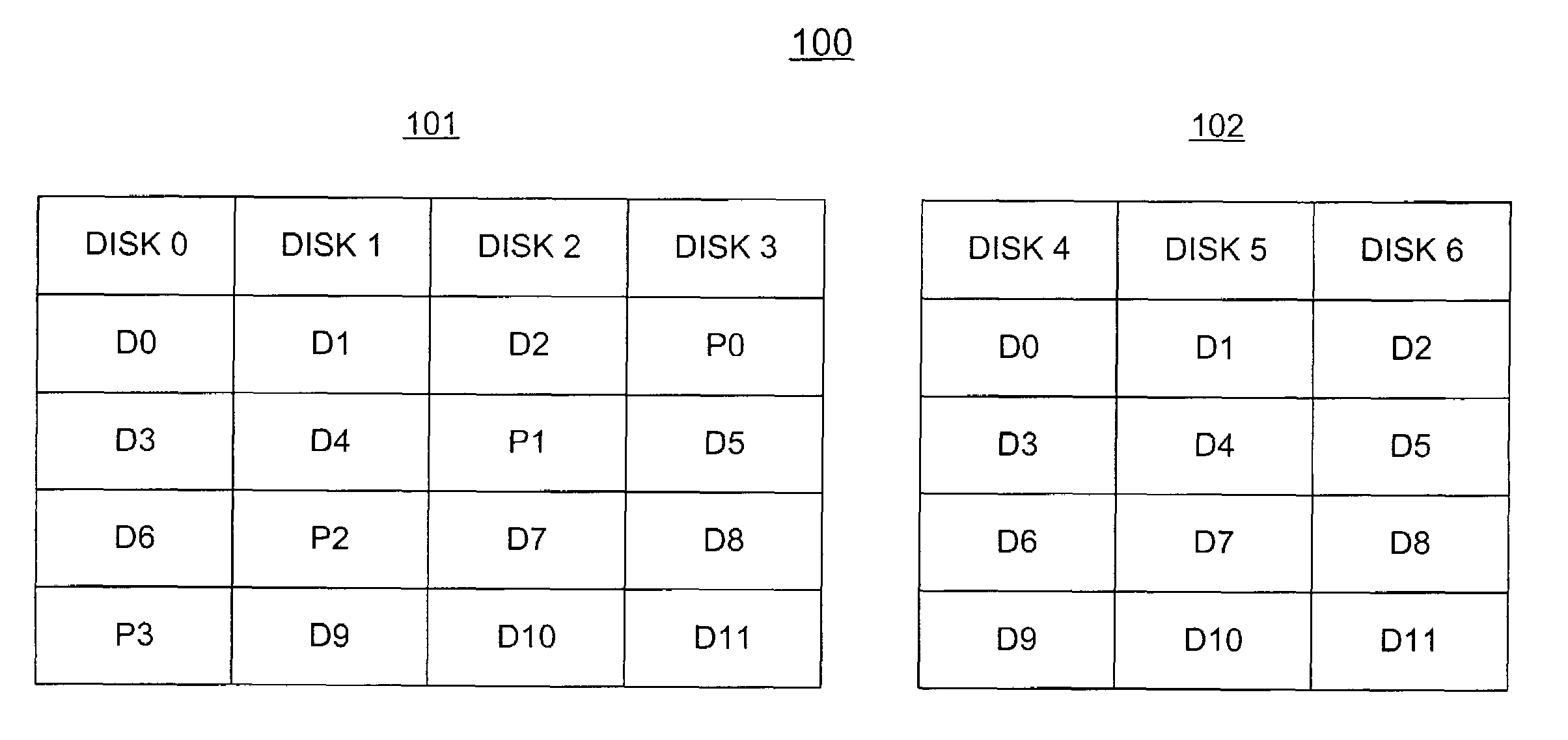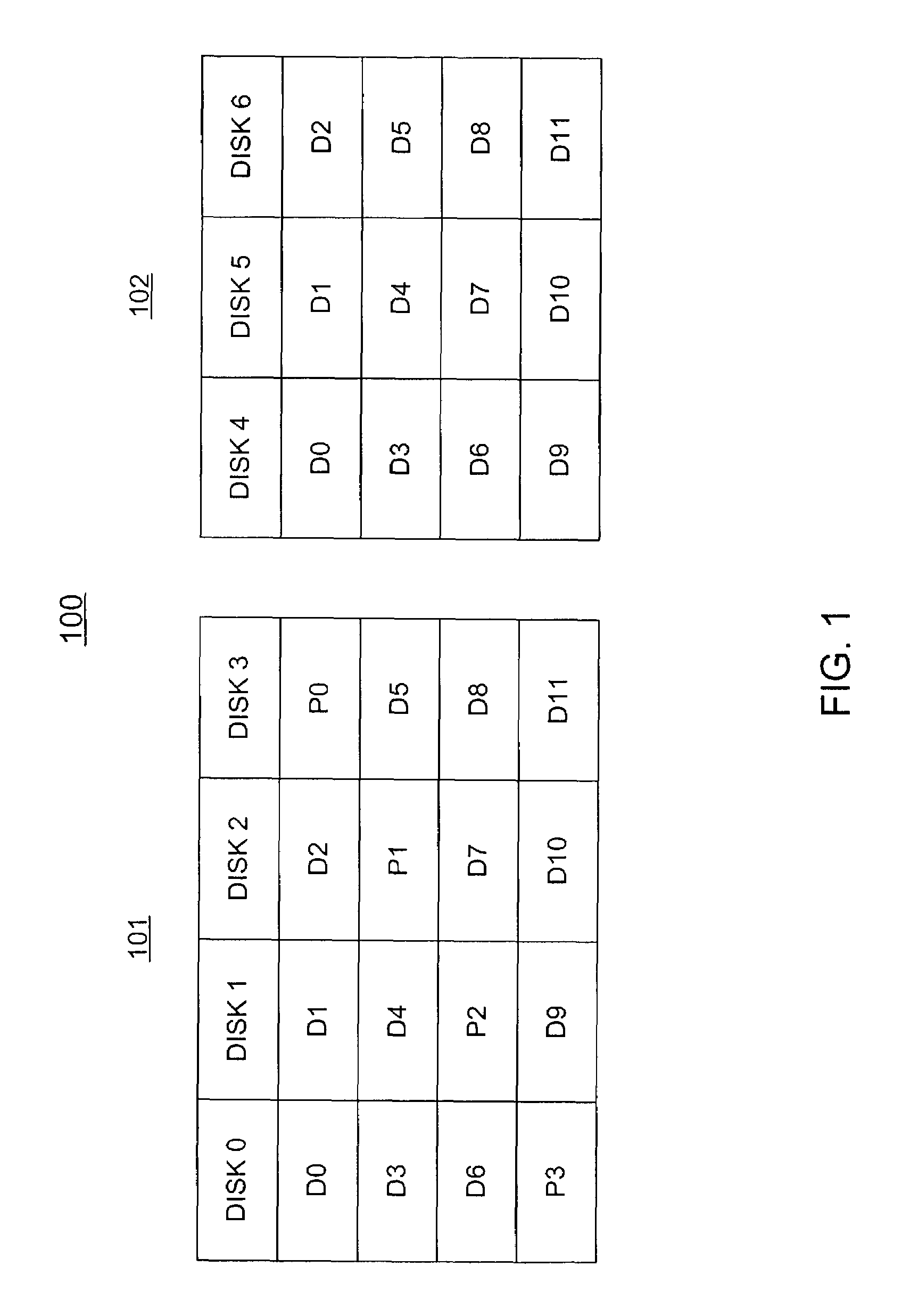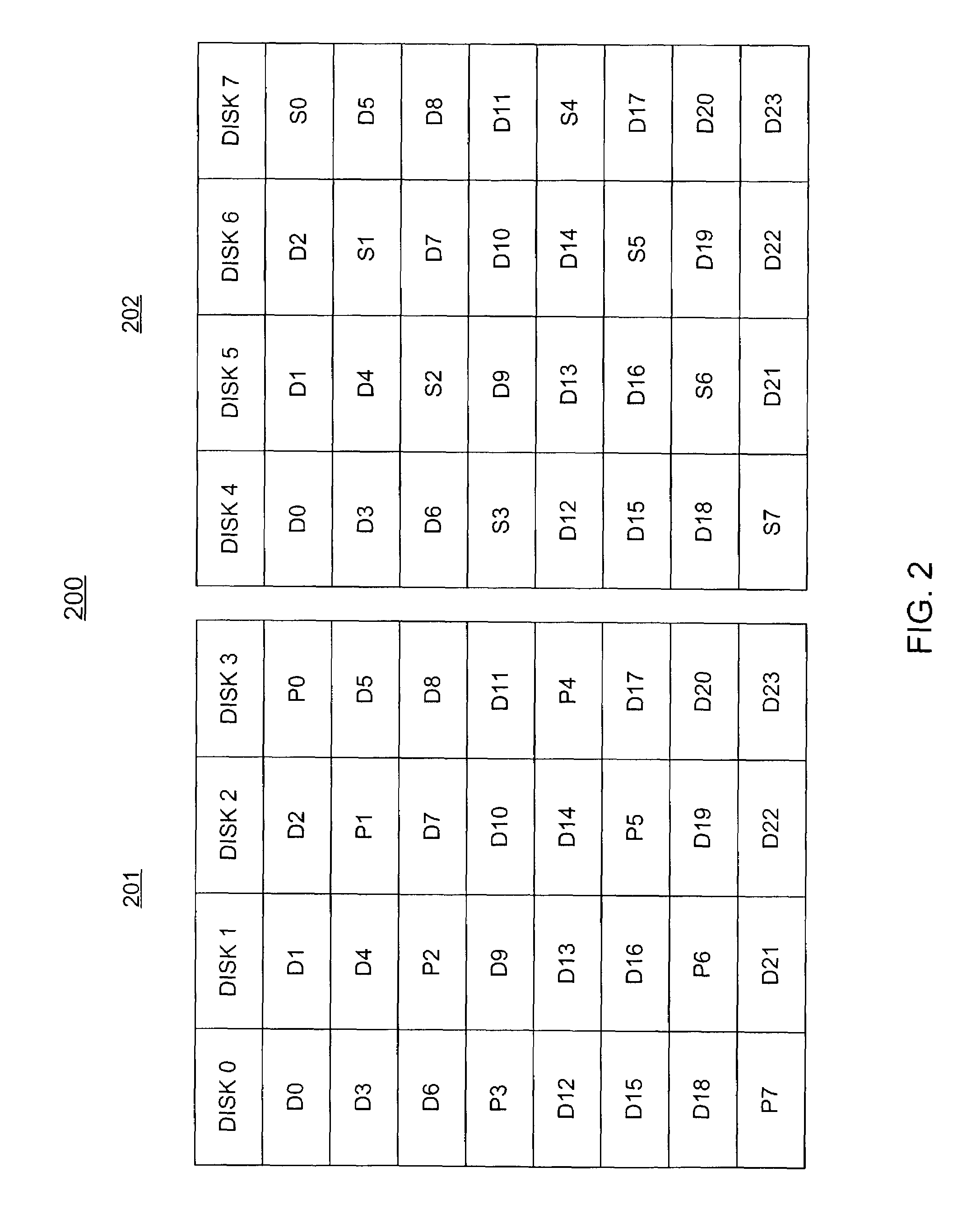Method and means for tolerating multiple dependent or arbitrary double disk failures in a disk array
a technology of disk arrays and dependent disks, applied in the field of mass storage devices, can solve the problems of affecting the performance of the remaining disks, and the dependence of the failure of the second disk within the storage system or the disk array,
- Summary
- Abstract
- Description
- Claims
- Application Information
AI Technical Summary
Benefits of technology
Problems solved by technology
Method used
Image
Examples
Embodiment Construction
[0025]The present invention provides a technique for storing data on an array of disks such that the data is still available when any two disks of the array fail, or when a failure occurs of more than two dependent disks. Additionally, the present invention provides a disk array having storage capacity equivalent to any number of disks, uses only XOR operations, and is optimal in the number of disk writes that are needed for tolerating a failure of any two disks.
[0026]A disk array that can tolerate a failure of any two disks must store at least three independent copies of the data. In that regard, the present invention maintains the original copy of the data, an additional full copy and a derived copy made up of parity data computed across subsets of the data. The amount of storage required by the present invention is just over twice that of a non-protected disk array.
[0027]FIG. 1 depicts an exemplary system 100 utilizing a parity-protected mirrored-array technique according to the ...
PUM
 Login to View More
Login to View More Abstract
Description
Claims
Application Information
 Login to View More
Login to View More - R&D
- Intellectual Property
- Life Sciences
- Materials
- Tech Scout
- Unparalleled Data Quality
- Higher Quality Content
- 60% Fewer Hallucinations
Browse by: Latest US Patents, China's latest patents, Technical Efficacy Thesaurus, Application Domain, Technology Topic, Popular Technical Reports.
© 2025 PatSnap. All rights reserved.Legal|Privacy policy|Modern Slavery Act Transparency Statement|Sitemap|About US| Contact US: help@patsnap.com



